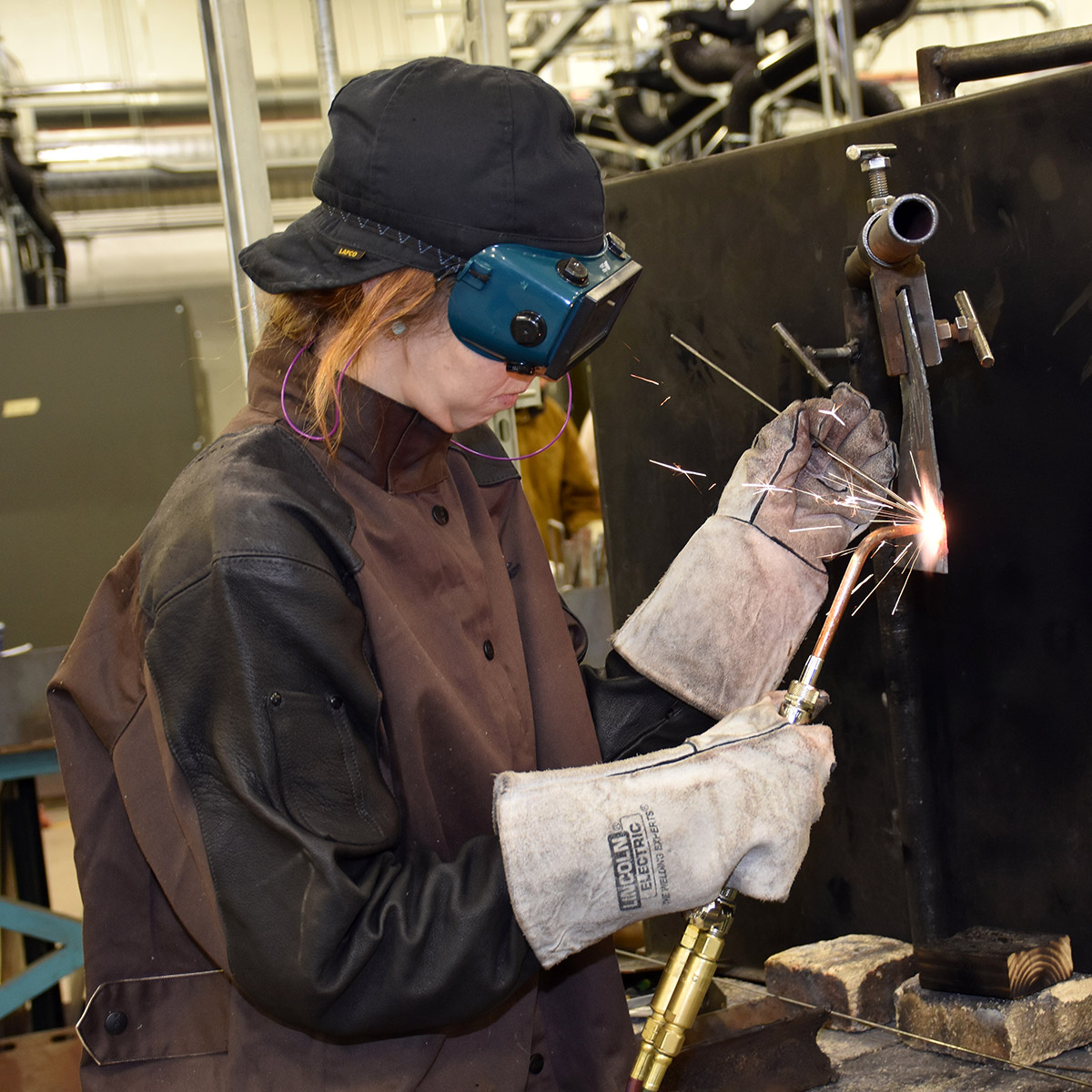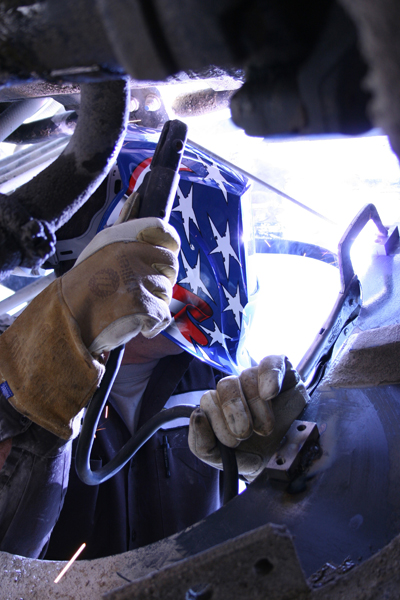Everything about Welding: Trick Insights Into Techniques and Ideal Practices for Success
Welding incorporates a variety of techniques, each matched for details products and applications. Comprehending these methods, such as GMAW, SMAW, and TIG, is crucial for attaining perfect outcomes. Moreover, the right devices and safety practices can not be overlooked. As preparation and fixing play critical functions in the welding process, mastering these components can considerably boost the high quality of the end product. What are the vital elements that guarantee an effective weld?
Recognizing Different Welding Methods
Welding techniques encompass a selection of techniques, each suited to particular applications and products. Among one of the most common techniques are Gas Metal Arc Welding (GMAW), Shielded Steel Arc Welding (SMAW), and Tungsten Inert Gas Welding (TIG) GMAW, also referred to as MIG welding, is popular for its rate and flexibility, making it suitable for slim materials. SMAW, or stick welding, is preferred for its simplicity and performance in outside environments, specifically with thicker metals. TIG welding supplies accuracy and control, making it appropriate for complex job and non-ferrous steels (Welding). Each method has its distinct benefits and considerations, allowing welders to select the best technique based on the job's demands, product type, and wanted results. Recognizing these techniques is vital for effective welding
Necessary Welding Devices and Devices
While various welding strategies require details skills, the best devices and devices are similarly vital for accomplishing top quality outcomes. Essential welding devices consists of welding machines, which vary depending upon the technique-- such as MIG, TIG, or stick welding. Protective equipment, consisting of gloves, helmets, and aprons, warranties safety and convenience throughout the procedure. In enhancement, clamps and fixtures aid safeguard products in position, making certain accuracy in welds. Consumables like welding poles, cord, and shielding gas are additionally important parts that influence the quality of the weld. Furthermore, tools such as mills and cutters assist in surface prep work and post-weld finishing, contributing to an expert result. Investing in high-quality devices eventually enhances the efficiency and performance of welding projects.
Security Practices in Welding
Appropriate safety techniques are important in the welding market to safeguard workers from prospective hazards. Welders should put on proper individual safety equipment (PPE), including safety helmets with appropriate shading, gloves, and flame-resistant apparel. Sufficient ventilation is important to minimize direct exposure to dangerous fumes and gases generated throughout the welding procedure. In addition, employees must be learnt the appropriate handling of welding tools to stop accidents. Fire precaution, such as keeping combustible materials far from the welding area and having fire extinguishers readily offered, are essential. Regular assessments of tools and offices can help determine possible dangers before they result in crashes. By sticking to these safety methods, welders can develop a safer working setting and decrease dangers linked with their profession.
Readying Materials for Welding
Preparing products for welding is an important action that substantially affects the quality and honesty of the last product (Montana Mobile Welding and Repair). Appropriate preparation involves cleaning the surface areas to eliminate impurities such as oil, dust, and rust, which can jeopardize the weld. Techniques such as grinding, fining sand, or making use of solvents are frequently used to attain a clean surface area. In addition, ensuring that the products mesh well is crucial; voids can bring about weak welds. It's additionally crucial to take into account the alignment and positioning of the parts, as this will certainly impact the ease of welding and the last result. Picking the suitable filler material and making certain compatibility with the base metals is essential for accomplishing strong, resilient welds.
Tips for Getting High-Quality Welds
Attaining top quality welds requires attention to detail and adherence to ideal practices throughout the welding process. Correct joint prep work is crucial, making sure surfaces are complimentary and tidy from contaminants. Selecting the proper filler product and welding strategy based on the base steels is essential for ideal bonding. Preserving regular traveling speed and angle while welding can promote and stop issues uniformity. Additionally, regulating warmth input is vital; excessive heat can result in warping and deteriorated joints. If needed, consistently examining the welds throughout the procedure allows for immediate adjustments. Employing suitable post-weld therapies, such as cleansing and tension alleviation, can enhance the resilience and honesty of the weld, ultimately making sure a successful outcome.
Troubleshooting Typical Welding Issues
Welding often offers difficulties that can affect the top quality and stability of the end product. Common issues such as porosity, irregular weld grains, and getting too hot can emerge, each calling for specific repairing techniques. Recognizing these issues is important for welders to enhance their abilities and accomplish excellent results.
Porosity Problems Explained
Although porosity can often be forgotten, it remains a critical problem in welding that can jeopardize the honesty of a completed product. Porosity refers to the presence of little gas pockets within the weld bead, which can lead and damage the joint to early failure. This issue commonly occurs from pollutants, dampness, or improper securing gas insurance coverage throughout the welding procedure. To alleviate porosity, welders ought to confirm that the base products are dry and clean, make use of suitable shielding gases, and preserve regular welding parameters. Regularly examining the tools and setting can likewise help identify prospective problems before they show up in the weld. Dealing with porosity successfully is essential for accomplishing strong, durable welds that satisfy high quality requirements.

Irregular Weld Beads
Inconsistent weld beads can click this site significantly affect the top quality and strength of a finished item. Different elements add to this problem, consisting of inappropriate travel rate, inaccurate amperage settings, and irregular electrode angles. When the welder relocates as well quickly, a bead might show up slim and do not have penetration, while relocating as well gradually can trigger excessive accumulation. Additionally, utilizing the wrong amperage can lead to either undercutting or excessive spatter, both of which compromise weld stability. The welder's strategy, such as inconsistent torch motion, can additionally result in uneven grain look. To minimize these problems, welders should concentrate on preserving steady, controlled movements and making sure correct equipment setups to attain harmony in their welds. Uniformity is vital to attaining solid and trustworthy welds.
Overheating and Bending Issues
Too much warmth during the welding procedure can result in considerable getting too hot and deforming problems, affecting the structural honesty of the workpiece. These issues typically manifest as distortion, which can jeopardize placement and fit-up, making more setting up testing. Aspects adding to overheating include the selection of welding criteria, such as voltage and travel speed, along with the sort of material being bonded. To alleviate these concerns, welders must keep regular travel rate and appropriate warm input while checking the work surface temperature level. Furthermore, pre-heating or post-weld heat therapy can help relieve stresses triggered by fast cooling - Montana Mobile Welding and Repair Fabrication. Routine assessment and adherence to ideal techniques are necessary in avoiding getting too hot and making sure the durability and reliability of welded structures
Frequently Asked Concerns
What Are the Occupation Opportunities in the Welding Market?
The welding market uses varied profession opportunities, consisting of positions as welders, designers, instructors, and inspectors. Experts can operate in manufacturing, construction, aerospace, and automobile industries, taking advantage of websites strong demand and competitive incomes in different functions.
How Can I Boost My Welding Rate Without Sacrificing Top Quality?
To improve welding speed without compromising top quality, one ought to exercise effective techniques, preserve devices, maximize setups, and improve hand-eye coordination. Normal training and looking for feedback can additionally significantly add to achieving much faster, high-grade welds.
What Accreditations Are Offered for Welders?
Numerous accreditations exist for welders, including those from the American Welding Culture (AWS), the National these details Facility for Construction Education and Research Study (NCCER), and numerous industry-specific companies. These credentials enhance employability and show ability efficiency.
Exactly How Does Welding Affect the Qualities of Metals?
Welding affects the properties of metals by modifying their microstructure, which can result in changes in ductility, toughness, and solidity. Heat input and cooling rates throughout the process significantly impact these product characteristics.
Can I Bonded Dissimilar Metals With Each Other?
